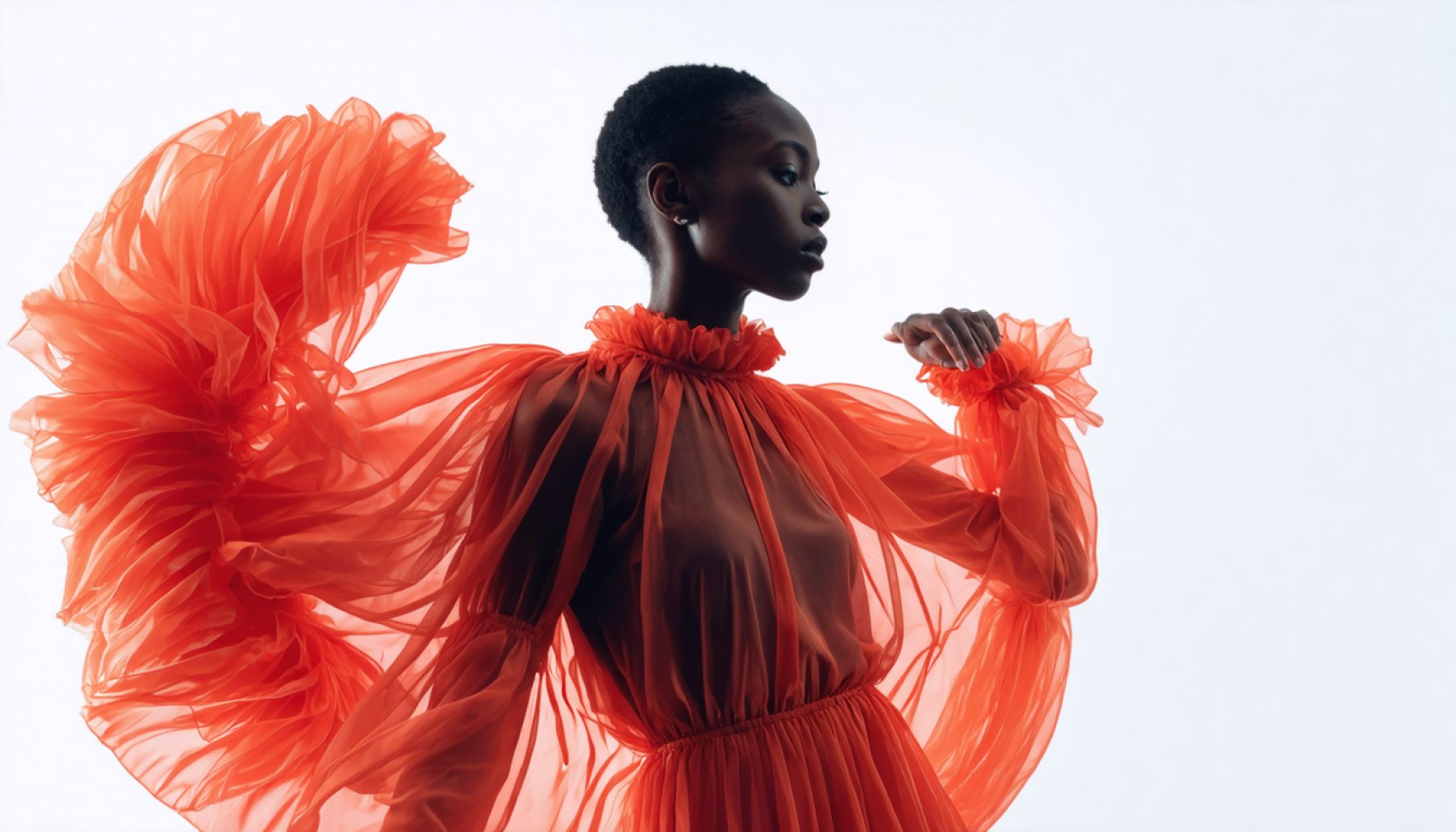- Giuseppe Di Morabito and Galib Gassanoff are the focus at Milan Fashion Week, showcasing captivating eveningwear and innovative Georgian designs, respectively.
- Di Morabito enchants global boutiques with Italian elegance, bold silhouettes, and exquisite detailing, crafting a narrative of allure and confidence.
- Galib Gassanoff makes his solo debut, integrating innovation and heritage, after leaving Act No1.
- Designers like Lessico Familiare revitalize old lace fabrics, while Lorenzo Seghezzi and Grossi weave elegance and denim innovation at the Fashion Hub.
- Main Milan brands are caught between commercial safety and bold creativity, under Prada’s influential shake-up.
- The show features unexpected elements, such as oversized bags and thigh-high boots, stirring a tension between conservative charm and daring rebellion.
Amidst the buzz of Milan Fashion Week, two designers stand poised to captivate the runway Friday: Giuseppe Di Morabito and Galib Gassanoff. Di Morabito, a maestro of eveningwear, enchants the world with his sultry, Italian elegance, a style that already flourishes in over 200 global boutiques. He’s crafting a narrative of allure and confidence, setting hearts aflutter with bold silhouettes and exquisite detailing.
Meanwhile, Gassanoff, heralding from Georgia, ventures forth solo after departing the opulent realms of Act No1. His runway debut promises a mesmerizing blend of innovation and heritage, drawing eager eyes and whispered speculations.
Yet, the excitement doesn’t stop there. Luminaries like Lessico Familiare continue to reimagine the delicate dance of old lace and forgotten fabrics, while Lorenzo Seghezzi and his corsetry promise to weave tales of elegance and strength. Meanwhile, Grossi dazzles with his denim wizardry, crafting intricate tapestries of modernity at the Fashion Hub.
This season, a palpable tension lingers in the air as Milan’s brands teeter on the edge of commercial safety and bold creativity. With Prada’s recent collections shaking the foundations, designers find themselves at the crossroads—pulling off a conservative charm or embracing audacious rebellion.
Pantone’s mocha mousse may color the air, but it’s the unpredictable that steals the show. Will they play it safe, or dare to dream? The answer reveals itself in the oversized bags, thigh-high boots, and echoes of bohemian grandeur—each piece a siren call to those who seek the extraordinary amidst uncertainty.
The Ultimate Guide to Milan Fashion Week’s New Rising Stars
How-To Steps & Life Hacks
How to Blend Tradition with Innovation in Fashion Design
1. Research and Inspiration: Study traditional motifs and styles, like typical Georgian tapestries or Italian lacework for authentic inspiration.
2. Sketches and Concepts: Create sketches that merge these traditional elements with contemporary silhouettes.
3. Material Selection: Opt for fabrics that speak to both modern trends and historic textures, such as silk infused with metal threads for modern sheen.
4. Prototypes and Feedback: Develop samples and gather feedback from both traditional artisans and modern designers for a nuanced view.
5. Market Testing: Introduce your designs through limited-run collections or pop-up shops to gauge customer reactions.
Real-World Use Cases
Giuseppe Di Morabito‘s designs often feature in high-end galas and exclusive events due to their luxurious appeal. Celebrities and socialites frequently don his creations during major red carpet events, setting trends for eveningwear globally.
Galib Gassanoff, having left Act No1, applies his rich Georgian heritage to craft clothes that appeal not only to fashion connoisseurs but also to art and culture lovers seeking pieces with a story.
Market Forecasts & Industry Trends
The high fashion industry continues to see a rise in demand for boutique brands that offer a blend of tradition and innovation. According to the Business of Fashion, personalization and cultural heritage in fashion are predicted to be significant trends as consumers demand more meaningful connections with their wardrobe choices.
Reviews & Comparisons
Giuseppe Di Morabito vs. Galib Gassanoff: While Di Morabito excels in creating bold and elegant eveningwear, Gassanoff distinguishes himself with designs that merge cultural narratives with avant-garde shapes. Customer reviews often highlight Di Morabito’s attention to detail, while Gassanoff is praised for innovative structure.
Controversies & Limitations
The tension between commercial safety and creative experimentation remains a pertinent issue for many designers. Some designers face criticism for not pushing creative boundaries, while others risk alienating core clientele by venturing too far from recognized brand strengths.
Features, Specs & Pricing
Giuseppe Di Morabito pieces typically range from $1,000 to $5,000, catering to a luxury market.
Galib Gassanoff is poised to offer cutting-edge pieces priced to emphasize exclusivity, often starting at several hundred to a few thousand dollars.
Security & Sustainability
Many Milan brands, including those at Fashion Week, are enhancing security and sustainability. This involves using blockchain for supply chain tracking and employing eco-friendly materials to meet the evolving demands of ethically aware consumers.
Insights & Predictions
Industry experts predict that micro-brands with a niche approach, like those seen at Milan Fashion Week, will grow substantially. This is partly due to consumers seeking designs that carry personal or cultural significance. Expect a continued fusion of global cultural elements with modern design palettes.
Tutorials & Compatibility
Styling Oversized Bags and Thigh-High Boots:
1. Pair oversized bags with contrasting smaller accessories to balance the look.
2. Wear thigh-high boots with short skirts or dresses to elongate the legs and create a chic appearance.
Pros & Cons Overview
Pros:
– Unique, culturally rich designs by emerging designers.
– High-quality materials and craftsmanship.
– Innovative use of traditional motifs.
Cons:
– High price points are inaccessible for many.
– Risk of alienation if the avant-garde approach oversteps consumer comfort zones.
Conclusion
To make the most of the trends showcased at Milan Fashion Week, consider investing in pieces that reflect both personal style and cultural narratives. Look for designs that combine tradition with contemporary flair for a wardrobe that speaks volumes about individuality and heritage.
For further insights and latest updates on fashion, visit Business of Fashion or Vogue.
Quick Tips
– Watch for the evolution of fabric tech and sustainability features in upcoming collections.
– Keep an eye on lesser-known designers that push traditional boundaries, as they often become tomorrow’s trendsetters.
